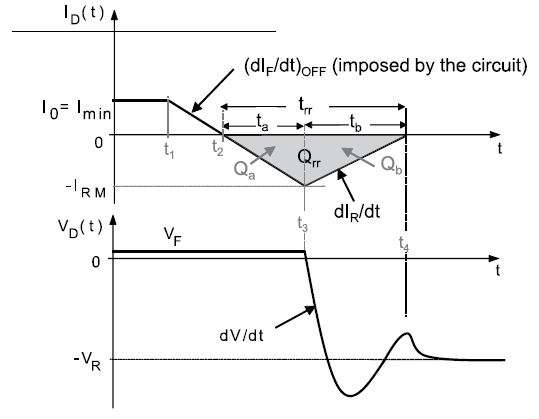Reverse Engineering for Data Recovery: Salvaging the Unsalvageable

In the realm of digital forensics and data recovery, there often comes a time when traditional methods fall short, leaving seemingly irretrievable data languishing on the edge of oblivion. It is in these dire circumstances that the art of reverse engineering emerges as a beacon of hope, unlocking the potential to salvage the unsalvageable.

Cracking the Enigma: Unveiling Hidden Data Structures

At its core, reverse engineering for data recovery is the systematic process of deconstructing a storage medium or data structure to decipher the underlying organization and format of the data it contains. This intricate endeavor delves into the very fabric of the storage medium, be it a hard drive, flash drive, or any other form of digital repository. The objective is to uncover the hidden mechanisms and protocols that govern the storage and retrieval of data, enabling the reconstruction of lost or corrupted files.
Navigating a Labyrinth of Encrypted Data
One of the most prevalent challenges encountered in data recovery is the presence of encryption, a formidable barrier that shields data from unauthorized access. To overcome this hurdle, reverse engineering plays a pivotal role in unraveling the complexities of encryption algorithms and deciphering the secrets they hold. By carefully analyzing the encrypted data, reverse engineers can meticulously reconstruct the encryption keys, granting access to the previously inaccessible information.
Reversing the Damage: Restoring Fragmented Files
File fragmentation, the scattering of data fragments across disparate locations on a storage medium, poses another formidable obstacle in the data recovery landscape. Reverse engineering offers a lifeline in this scenario as well, providing a means to reassemble the shattered fragments into a cohesive whole. Through meticulous analysis of the file system’s structure and the patterns of fragmentation, reverse engineers can painstakingly piece together the fragmented data, resurrecting lost files from the depths of digital oblivion.
Gleaning Insights from Corrupted Data
Even in the face of severe data corruption, reverse engineering can offer a glimmer of hope. By examining the remnants of corrupted files, reverse engineers can often infer the original structure and content of the data. This intricate process involves analyzing patterns, identifying anomalies, and leveraging specialized tools and algorithms to extract meaningful information from the corrupted fragments. While complete recovery may not always be feasible, reverse engineering can provide invaluable insights, enabling the reconstruction of critical data elements.
A Symphony of Expertise: The Role of Specialists
The complexity and technical intricacies involved in reverse engineering for data recovery demand a high level of expertise and specialization. It is a domain reserved for highly skilled professionals, often with backgrounds in computer science, forensics, and data recovery engineering. These individuals possess the knowledge, skills, and tools necessary to navigate the labyrinthine complexities of storage media and decipher the nuances of data structures.
Conclusion: A Last Resort with Remarkable Potential
Reverse engineering for data recovery stands as a testament to human ingenuity and the indomitable spirit of innovation. It is a last resort when traditional methods fail, a powerful tool capable of salvaging the unsalvageable. While it requires immense skill and expertise, the rewards can be immeasurable, breathing new life into lost data and illuminating the darkest corners of digital obscurity.# Reverse Engineering for Data Recovery: Salvaging the Unsalvageable
Executive Summary
Reverse engineering is a powerful technique for recovering data from inaccessible or corrupted devices. By understanding the internal structure and behavior of these devices, it is possible to reconstruct missing or damaged data and gain valuable insights into the underlying system. This article provides comprehensive guide to reverse engineering for data recovery, covering key subtopics such as hardware analysis, software reconstruction, file system forensics, and data extraction techniques.
Introduction
Data loss can be devastating, whether it’s due to accidental deletion, hardware failure, or malware attacks. Traditional data recovery methods often fall short when dealing with complex or inaccessible devices. However, reverse engineering offers a powerful alternative approach, providing a systematic and comprehensive way to recover lost or corrupted data.
Hardware Analysis
Reverse engineering begins with a thorough analysis of the hardware components involved. This includes disassembling the device, identifying key components such as processors, memory chips, and storage media, and documenting their interconnections.
-
Component Identification: Identifying and understanding the purpose of each hardware component is crucial for successful reverse engineering.
-
Signal Tracing: Investigating the signal flow between components helps determine how data is processed and stored.
-
Power and Bus Analysis: Analyzing power consumption and bus protocols provides insights into data transfer and communication patterns.
Software Reconstruction
Once the hardware architecture is understood, the next step is to reconstruct the software components that govern the device’s operation. This involves analyzing firmware, drivers, and application software to understand their interactions and data structures.
-
Memory Analysis: Examining the contents of RAM and ROM can reveal valuable information about running processes, loaded modules, and data buffers.
-
Opcode Analysis: Reverse engineering compiled or assembly code instructions to understand the flow of control and data manipulation routines.
-
Binary Patching: Modifying binary code to bypass protection mechanisms or fix bugs can enable data recovery.
File System Forensics
File system forensics involves analyzing the structure and contents of file systems to recover deleted or damaged files. This requires a deep understanding of file system metadata, data allocation strategies, and recovery algorithms.
-
File System Identification: Analyzing boot sectors, partition tables, and file system signatures is essential for identifying the type of file system.
-
Data Recovery Techniques: Applying specialized algorithms and tools to recover deleted or fragmented files, such as file carving and slack space analysis.
-
File System Repair: Employing techniques to repair damaged file systems and recover data from corrupted storage media.
Data Extraction Techniques
The final stage of reverse engineering for data recovery involves extracting the recovered data in a usable format. This includes converting raw data into meaningful information and presenting it in a structured manner.
-
Data Conversion: Converting raw binary data into human-readable formats, such as text, images, or videos, is essential for analysis.
-
Data Interpretation: Analyzing recovered data to identify patterns, relationships, and insights that may help in solving the initial problem.
-
Data Presentation: Presenting the recovered data in a clear and organized manner, such as reports, visualizations, or timelines, is crucial for effective communication.
Conclusion
Reverse engineering is a powerful and versatile technique for recovering data from inaccessible or corrupted devices. By understanding the internal structure and behavior of these devices, it is possible to reconstruct missing or damaged data and gain valuable insights into the underlying system. With a systematic and comprehensive approach, reverse engineering can provide a lifeline to recover the unsalvageable.
Keyword Phrase Tags:
- reverse engineering
- data recovery
- hardware analysis
- software reconstruction
- file system forensics
- data extraction techniques

Reverse engineering is a really cool technique. I’m amazed at how it can be used to recover data that was thought to be lost forever.
This is really interesting! I never knew that it was possible to recover data from a damaged storage device.
I’ve used reverse engineering to recover data from a hard drive that was damaged in a fire. It was a long process, but it was definitely worth it.
Reverse engineering is a powerful technique, but it’s important to remember that it’s not always possible to recover data. The severity of the damage to the storage device will ultimately determine whether or not data can be recovered.
Oh yeah, reverse engineering is totally easy. Just grab a few tools and start poking around inside your hard drive. What could possibly go wrong?
I’m pretty sure that reverse engineering is just a fancy way of saying ‘I’m going to take this thing apart and hope for the best.’
I’m not convinced that reverse engineering is really worth the time and effort. I’ve heard that it’s often unsuccessful.
Reverse engineering is a valuable tool for data recovery professionals. However, it’s important to use it wisely. If the damage to the storage device is too severe, it may be impossible to recover any data.
I’m curious to know how reverse engineering actually works. Can you provide any more details?
This all sounds way too complicated for me. I’m just going to hope that I never lose any important data.
Reverse engineering is a fascinating technique that can be used to recover data from even the most damaged storage devices. It’s a valuable tool for anyone who wants to protect their data from loss.